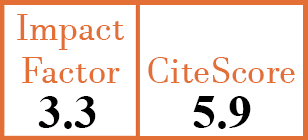Full Papers
Idiopathic retroperitoneal fibrosis: clinical features, treatment modalities, relapse rate in Greek patients and a review of the literature
E. Zampeli1, A.I. Venetsanopoulou2, S. Christaki3, O.D. Argyropoulou4, K.A. Boki5, M.N. Manoussakis6, F.N. Skopouli7, A.G. Tzioufas8, H.M. Moutsopoulos9
- 3rd Internal Medicine Department, Athens Medical School, Sotiria Hospital Athens, Greece.
- Department of Pathophysiology, Athens Medical School, Athens, Greece.
- Department of Internal Medicine and Autoimmune Diseases, Euroclinic Hospital, Athens, Greece.
- Department of Pathophysiology, Athens Medical School, Athens, and Joint Academic Rheumatology Program, School of Medicine, National and Kapodistrian University of Athens, Greece.
- Rheumatology Unit, Sismanoglion Hospital, Athens, Greece.
- Department of Pathophysiology, Athens Medical School, Athens, and Joint Academic Rheumatology Program, School of Medicine, National and Kapodistrian University of Athens, Greece.
- Department of Internal Medicine and Autoimmune Diseases, Euroclinic Hospital, Athens, and Department of Nutrition and Dietetics, Harokopio University, Athens, Greece.
- Department of Pathophysiology, Athens Medical School, Athens, and Joint Academic Rheumatology Program, School of Medicine, National and Kapodistrian University of Athens, Greece. agtzi@med.uoa.gr
- Academy of Athens, Greece.
CER14904
2022 Vol.40, N°9
PI 1642, PF 1649
Full Papers
PMID: 34796838 [PubMed]
Received: 16/06/2021
Accepted : 27/09/2021
In Press: 11/11/2021
Published: 20/09/2022
Abstract
OBJECTIVES:
Retroperitoneal fibrosis (RPF) is mostly idiopathic (iRPF); however, it can be secondary to drugs, malignancies, infections, or, as recently recognised, can be part of the IgG4-related diseases. The aim of our study was i) to describe the presenting clinical/laboratory/imaging features and treatment modalities used in patients with iRPF and ii) to evaluate factors potentially associated with disease relapse.
METHODS:
The medical records of patients diagnosed with iRPF and followed in four tertiary medical units in Athens, Greece from 2000 to 2018 were retrospectively evaluated.
RESULTS:
Sixty-seven patients with iRPF were included in the study. Seventy-three per cent were males, with a mean age at diagnosis 56.0±9.2 years. Low-back pain (63%) and constitutional symptoms (57%) were the commonest presenting symptoms. Elevated acute-phase reactants (78%), anaemia (43%) and impaired renal function (41%) were the most common laboratory findings. Serum IgG4 at diagnosis was evaluated in 36/67 patients and 36% of them had elevated levels (mean 297.7±166.3mg/dL). Diagnosis was mainly based on abdominal CT and/or MRI. Clinical/laboratory/radiological presentation did not differ between patients with elevated and normal serum IgG4 levels. Steroids were used as first-line treatment in 98%. Relapse occurred in 28.6% after a mean of 43.1±31.8 months. Relapse did not associate to initial clinical/imaging findings or to any treatment used, however patients with increased serum IgG4 had a significantly higher relapse rate (75% vs. 25%, p=0.005).
CONCLUSIONS:
Relapse occurred in one-fifth of patients independently of the initial clinical/radiographic presentation or treatment used. iRPF patients with baseline elevated serum IgG4 levels have a higher relapse rate.


